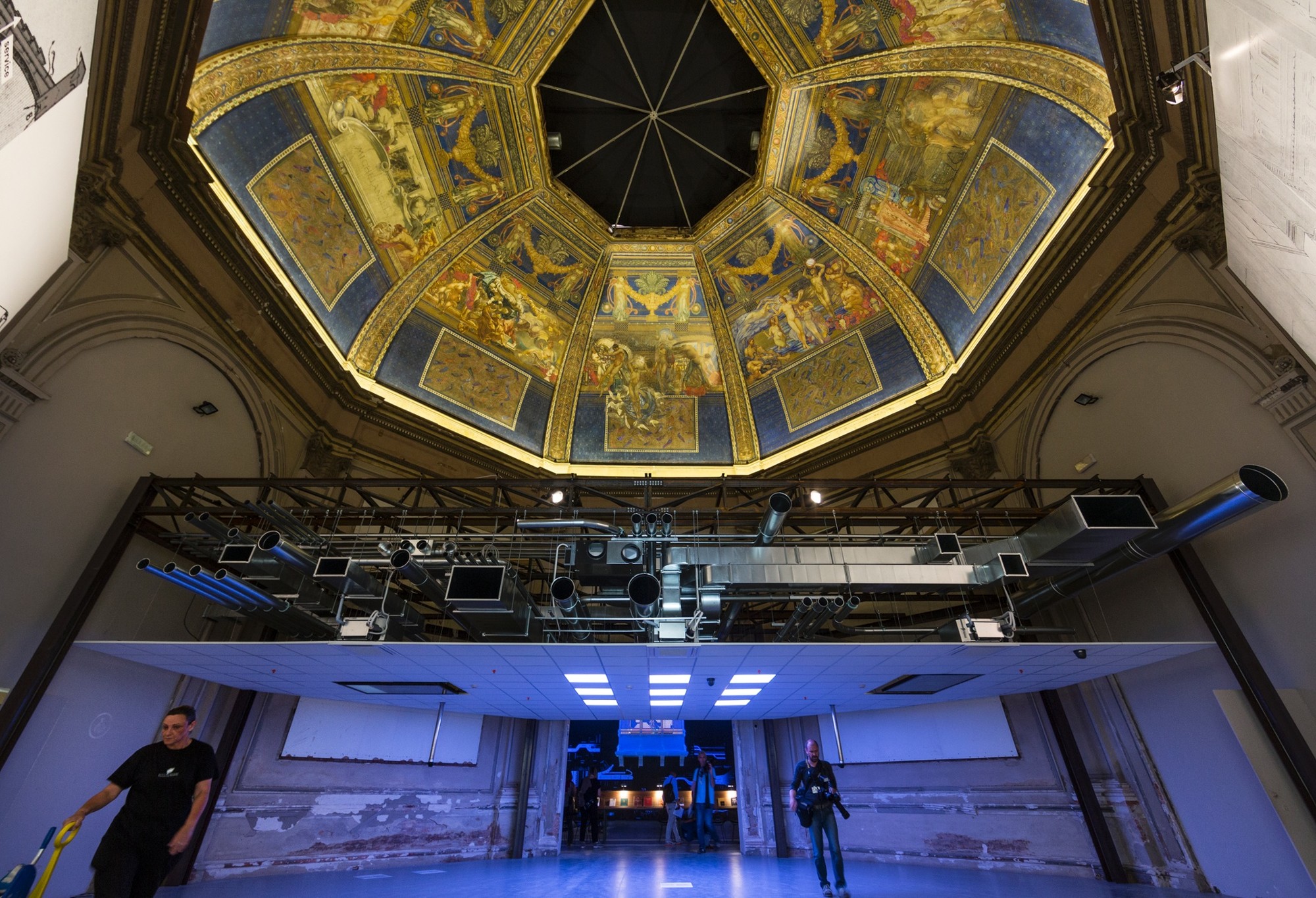
Fundamentals, the title of the 2014 Venice Biennale, will close its doors in a matter of days (on the 23rd November). From the moment Rem Koolhaas revealed the title for this year’s Biennale in January 2013, asking national curators to respond directly to the theme of ‘Absorbing Modernity 1914-2014’, there was an inkling that this Biennale would be in some way special. Having rejected offers to direct the Biennale in the past, the fact that Koolhaas chose to act not only as curator but also thematic co-ordinator of the complete international effort, was significant. This announcement led Peter Eisenman (one of Koolhaas' earliest tutors and advocates) to state in one interview that “[Rem is] stating his end: the end of [his] career, the end of [his] hegemony, the end of [his] mythology, the end of everything, the end of architecture.”

What was Koolhaas’ aim? Aside from stating from the very start that Fundamentals would “be a Biennale about architecture, not architects,” the thrust of the concept was to unpick and reveal individual vernacular architecture in the age of globalisation. In March 2014, OMA*AMO revealed more information and visuals. They stated that the Biennale would be divided into three distinct but interlocking exhibitions: Monditalia in the Arsenale, Elements of Architecture in the Central Pavilion of the Giardini, and the network of thematically linked national pavilions and collateral events located across the city, centring in the Giardini. One image in particular was released which illustrated the theme in black and white: twelve photographs of national typologies taken in 1914 when, according to Koolhaas, “national architectures were still recognisable.”

.jpg?1416173979)
The critics weighed in almost as soon as the Biennale opened. Rowan Moore, for example, detected “an underlying pessimism” to Koolhaas’ creation: “Things Ain’t What They Used to Be is one message, or We’re All Doomed.” Nevertheless, attention soon shifted to the pavilions and exhibitions which won some of the most prestigious accolades in the architectural world. Korea’s exhibition, entitled Crow’s Eye View: The Korean Peninsula, captured the jury’s imagination. Winning the Golden Lion for the “extraordinary achievement of presenting a new and rich body of knowledge of architecture and urbanism in a highly charged political situation,” it provided to be a truly insightful top-down view into the duality of architecture on the Korean peninsula.

Chile’s Monolith Controversies, which won the Silver Lion, focused on one essential element of modern architecture – a prefabricated concrete wall. The jury, who felt that “it critically highlight[ed] the role of elements of architecture in different ideological and political contexts,” were enthralled. The pavilions of Canada, France and Russia were also awarded Special Mentions and Phyllis Lambert received the Golden Lion for Lifetime Achievement. In Monditalia,the Silver Lion for best research project went to Andrés Jaque/Office for Political Innovation. Radical Pedagogies: ACTION-REACTION-INTERACTION, Intermundia, and Italian Lines all were honoured with mentions.
The Elements of Architecture exhibition was curated and designed in collaboration with a group of students from the Harvard GSD, who spent a summer in Rotterdam transforming doors, windows, stairs and toilets from across time into an architectural narrative. ArchDaily spoke to Koolhaas during the preview days of the Biennale, in which he used the opportunity to discuss the importance of the archive. For him, an exhibition like Fundamentals “depends on archives, and we realised that the whole of the world and particularly the whole of Europe is full of the most amazing archives, the most amazing collections and many of those collections are extremely deep but extremely narrow. And I think that was exactly what we were looking for: to focus on a single element but in tremendous depth.”

Monditalia, the long-awaited compendium of forty one projects stretching the length and breadth of the Venetian Arsenale, was notably well received. It mobilised the other sectors of the Venice Biennale (Cinema, Dance and Music) “in order to capture a ‘polyphonic’ portrait of a European country.” It gathered and and illustrated significant Italian subjects: history, architecture, politics, religion, technology, economics, industry and media, “representing the complex Italian reality as a paradigm of local and global conditions.”

For a Biennale which has seen a number of 'firsts' - from the extent to which the curator was involved himself, to the representation of the continent of Antarctica for the first time, and even to the sheer duration of this year's exhibition - Koolhaas achieved something extraordinary. Does it mark "the end" of his career as Eisenman has suggested? Although it's clear that Koolhaas will never give a direct answer to that, it's difficult to imagine the influence he exerts over the architectural world waning with the wrapping up of his groundbreaking Biennale.
ArchDaily's complete archive of the 2014 Venice Biennale is available to see here. You can buy the two key publications, outlining every aspect of the Biennale in wonderful detail, from Amazon (Elements and Fundamentals).
Browse other interesting coverage and opinions on the Biennale below:
Rem Koolhaas' "Elements": Uncovering Architecture's Origins, Assuring Its Future
34 Football Fields of Museums: Rem Koolhaas Talks at the Galeries Lafayette
Mies. TV: Alternative Coverage of the 2014 Venice Biennale
100 Architects From 6 Continents Discuss "Time Space Existence" at the 2014 Venice Biennale
Our coverage was brought to you by CEMEX. Follow them on Facebook, Twitter and YouTube.


